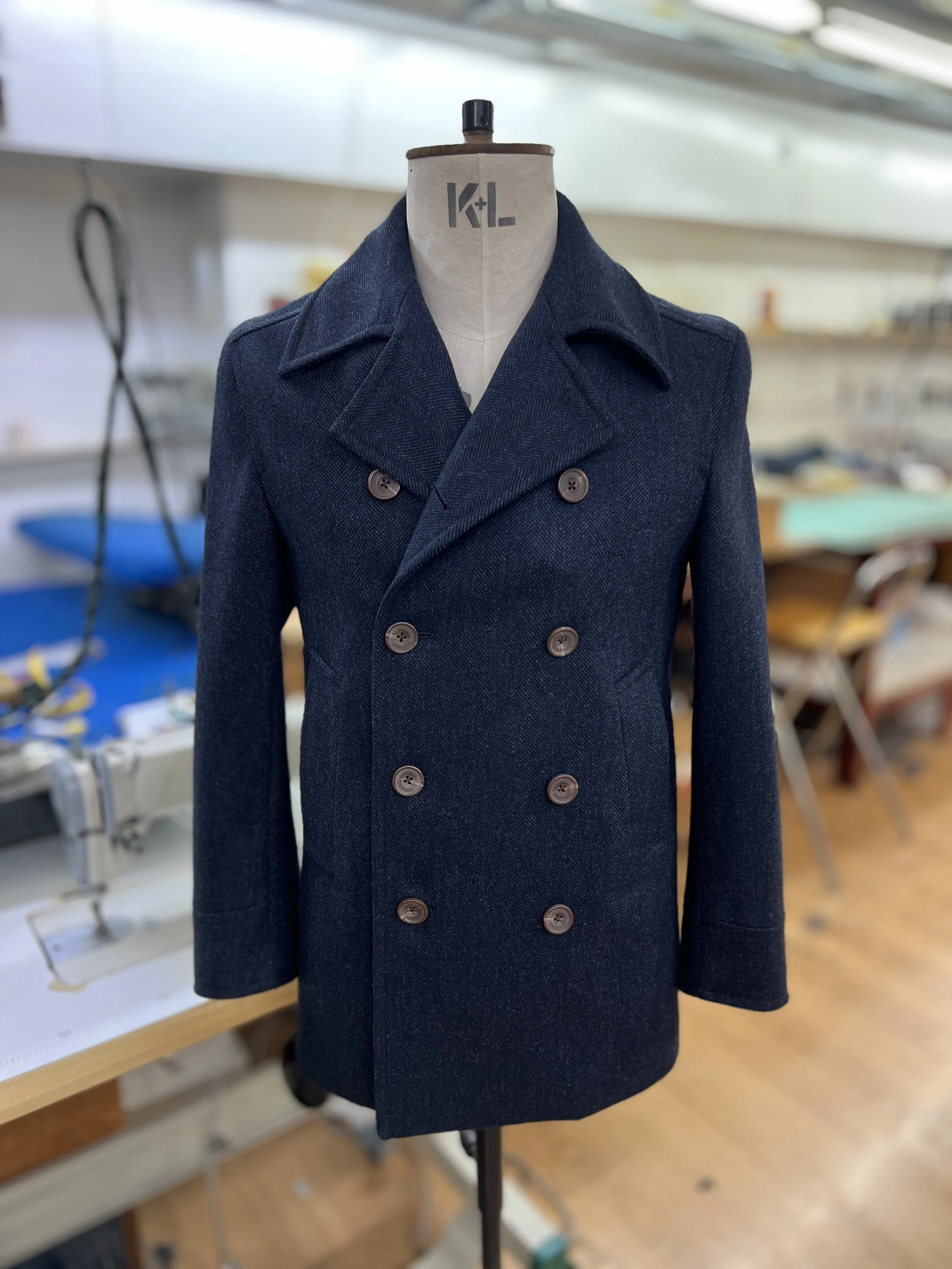The Timeless Peacoat: From Naval Heritage to Modern Bespoke
Bespoke peacoat by Roberto Revilla London using Loro Piana New Zealand Wool coating
Few garments in menswear combine history, function and timeless style quite like the peacoat. What started as a piece of practical naval uniform over 200 years ago has become one of the most versatile and enduring staples a man can own.
As a London bespoke tailor, I often get asked which outerwear pieces are worth investing in. The peacoat is always near the top of my list. Let’s take a closer look at where it came from, how it has evolved and how you can wear it today.
The Origins of the Peacoat
The word “peacoat” is believed to come from the Dutch word pije, meaning a coarse wool fabric. Dutch sailors in the 18th century wore heavy woollen coats for warmth at sea, and the design was soon adopted by the British Navy.
By the late 19th century the United States Navy made the peacoat standard issue for sailors. These coats weren’t about style : they were about survival.
Heavy wool protected sailors from freezing, wet decks.
The double-breasted design provided extra insulation.
Broad lapels could be flipped up against wind and rain.
Slanted “handwarmer” pockets gave much-needed comfort during long shifts on deck.
The result? A garment that was purely functional but undeniably sharp in appearance.
From Naval Decks to Civilian Streets
During both World Wars the peacoat became an icon of naval service. Veterans returned home with theirs and continued to wear them, introducing the coat to civilian wardrobes.
By the 1950s and 60s Hollywood stars such as James Dean and Steve McQueen were photographed in peacoats, cementing its status as a symbol of effortless cool.
Throughout the late 20th century the coat slimmed down, new colours appeared - grey, camel, black - and designers began experimenting with fabrics. Yet the DNA of the garment remained: wool cloth, double-breasted front, broad lapels and anchor-embossed buttons.
The Modern Peacoat
Today, the peacoat remains a favourite across both luxury fashion houses and ready-to-wear brands. Modern versions are often softer (cashmere blends, sustainable wools) and cut in trimmer silhouettes for a contemporary fit.
Despite these updates the core design has barely changed in two centuries. That’s the power of great tailoring: when something is this functional and stylish, there’s no reason to reinvent it!
As a bespoke tailor in London I often reimagine the peacoat for clients who want the traditional silhouette with a personalised twist : whether that’s a different cloth, a subtle lining detail or a sharper cut to flatter their frame.
How to Wear a Peacoat
The peacoat’s biggest strength is its versatility. It works across almost every dress code:
Smart: Wear it over a suit as an alternative to the overcoat.
Smart Casual: Pair with a rollneck and tailored trousers for understated elegance.
Casual: Throw it on with jeans, boots and a chunky knit.
It’s an outerwear piece you can wear from autumn right through to early spring. Flip the collar up on windy days, or leave it open when the sun’s out. Either way, it adds instant presence to your outfit.
Why Every Man Should Own a Peacoat
From Dutch sailors to Hollywood icons, the peacoat has proven itself more than just a trend. It’s a piece of clothing that transcends generations.
If you’re looking for outerwear that blends practicality, heritage and style, a well-fitted peacoat is hard to beat. For me it’s the most versatile coat a man can have. And if you want yours to be truly special, cut to your exact frame and personal style, a bespoke version is an investment you’ll wear for decades.
Interested in having a peacoat made for you? www.robertorevillalondon.com/contact
Explore our full range of outerwear here : www.robertorevillalondon.com/lookbook

